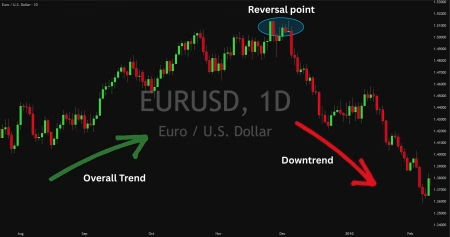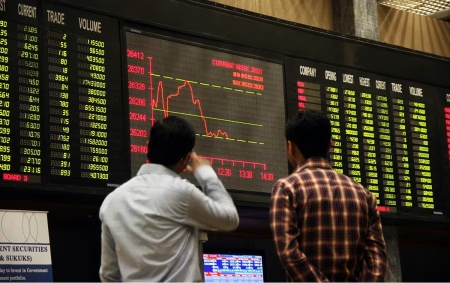Pivot Points
Pivot Points – As a seasoned forex trader, I know how hard it is to keep up with the market. Finding a tool that gives you an edge is like discovering a treasure. That’s what I felt when I learned about pivot points.
Pivot points are not just numbers; they show the market’s pulse. They reveal the balance between buying and selling forces. By using these levels, you can find trading chances and reduce risks in the volatile market.
Key Takeaways
- Pivot points provide potential support and resistance levels to help minimize risk in forex trading.
- They are calculated using the previous day’s high, low, and closing prices, making them particularly useful in the highly liquid forex market.
- Pivot points can be used to determine market entry points, stop placements, and profit-taking levels.
- Understanding pivot points and how they align with former support and resistance levels is crucial for effective trading strategies.
- Incorporating additional technical indicators alongside pivot points can aid in decision-making and improve trading performance.
In this guide, we’ll explore pivot points deeply. We’ll cover their basics, how to calculate them, and their use in trading. This guide is for both new and experienced traders. It will give you the tools to use pivot points and improve your trading.
Understanding the Basics of Pivot Points
Pivot points are key indicators in the forex market. They help determine the trend and sentiment of currency pairs. Originally used by floor traders, pivot points are now a big part of forex trading.
What Are Pivot Points?
Pivot points are found by averaging the previous day’s high, low, and close. They act as support and resistance, helping traders find good times to buy or sell. The high liquidity in the forex market makes pivot points very useful.
Why Pivot Points Matter in Forex
Pivot points are crucial for traders in the forex market. They help spot support and resistance levels, confirm trends, and manage risks. Knowing about pivot points can help traders make better choices and improve their results.
Historical Development of Pivot Points
Pivot points started in the equities and futures markets. Floor traders used them to guess market moves. As forex grew, traders saw the value of pivot points for currency trading, making them a staple in the market.
| Pivot Point Calculation | Formula |
|---|---|
| Pivot Point (P) | (High + Low + Close) / 3 |
| First Support (S1) | P – (High – Low) |
| First Resistance (R1) | P + (High – Low) |
| Second Support (S2) | P – 2 * (High – Low) |
| Second Resistance (R2) | P + 2 * (High – Low) |
This table shows how to calculate pivot points and their support and resistance levels. It’s a great starting point for understanding their role in forex.
https://tradingmarketsignals.com/trading-made-easy/
“Pivot points are a valuable tool for traders in the forex market, helping them identify key support and resistance levels and make more informed trading decisions.”
Calculating Pivot Points in Forex Markets
In the world of forex trading, pivot points are key. They help find support and resistance levels. The formula is simple: it uses yesterday’s high, low, and close prices to find a pivot point.
This pivot point is a key reference for traders. It helps them see where prices might go next. This makes it easier to make trading decisions.
The formula for the pivot point is: Pivot Point = (High + Low + Close) / 3. From this pivot point, traders can find more support and resistance levels. The first support (S1) and resistance (R1) levels are found by: R1 = (2 x Pivot Point) – Low, and S1 = (2 x Pivot Point) – High. There are also second and third levels of support and resistance.
These pivot point calculations are very useful for traders. They help analyze market trends and find trading opportunities. By knowing the pivot point and support and resistance levels, traders can make better decisions about when to buy or sell.

Using pivot points in forex trading helps traders understand market sentiment. If the price is above the pivot point, it’s likely bullish. If it’s below, it’s bearish. This info can be even more useful when looking at candlestick patterns around the pivot point.
Overall, the pivot point calculation is essential in forex trading. It gives traders a powerful tool for finding support and resistance levels. This helps them make more informed trading decisions.
Support and Resistance Levels Using Pivot Points
Pivot points are a key tool in forex trading. They help traders spot support and resistance levels. These levels, like S1, R1, S2, R2, S3, and R3, show where prices might move or change direction.
First Level Support and Resistance
The first support (S1) and resistance (R1) levels are near the pivot point. They are often tested first. For EUR/USD, the actual low is usually 1 pip below S1, and the actual high is 1 pip below R1.
These levels are crucial. They help traders find good entry and exit points. They also guide where to set stop-loss orders.
Second Level Support and Resistance
The second support (S2) and resistance (R2) levels offer more insight. The price goes beyond S1 or R1 about 42-44% of the time. But it goes beyond S2 or R2 only about 17% of the time.
These levels help set price targets or find areas where prices might consolidate.
Third Level Support and Resistance
The third support (S3) and resistance (R3) levels are farthest from the pivot point. Yet, they still offer valuable insights. The price goes beyond S3 or R3 only about 3% of the time.
These levels signal significant price movements or potential market breakouts.
Knowing these support and resistance levels helps traders set stop-loss orders and take-profit targets with more confidence. This improves their risk management and trading strategy.
| Level | Calculation | Frequency of Price Movement |
|---|---|---|
| R3 | Previous Day High + 2(Pivot – Previous Day Low) | Exceeded 3% of the time |
| R2 | Pivot + (Resistance Level 1 – Support Level 1) | Exceeded 17% of the time |
| R1 | (Pivot x 2) – Previous Day Low | Exceeded 44% of the time |
| Pivot | Previous Day (High + Low + Close) / 3 | N/A |
| S1 | (Pivot x 2) – Previous Day High | Exceeded 44% of the time |
| S2 | Pivot – (Resistance Level 1 – Support Level 1) | Exceeded 17% of the time |
| S3 | Previous Day Low – 2(Previous Day High – Pivot) | Exceeded 3% of the time |
By understanding and using these support and resistance levels, forex traders can make better decisions. They can set stop-loss orders and develop strategies that use these key levels effectively.
Types of Pivot Point Calculations
In the world of forex trading, pivot points are key. They help find support and resistance areas. There are many ways to calculate these levels, each with its own method. Knowing the different pivot point formulas helps traders make better choices and enhance their technical analysis plans.
The standard pivot point calculation uses yesterday’s high, low, and close prices. It finds the current pivot point and support and resistance levels. Another method adds the current day’s opening price, using the formula: Pivot Point = (Today’s Open + Yesterday’s High + Low + Close) / 4.
Tom DeMark, founder of DeMARK Analytics, created another method. It uses the opening and closing prices in a different way. This gives traders a fresh view on support and resistance.
Most forex trading platforms offer many pivot point indicators. This lets traders pick their favorite method. The choice of formula can change where these key levels are placed, affecting trading decisions.
There’s no one “best” way to calculate pivot points. The right method depends on the trader’s strategy and trading calculations. It also depends on their approach to technical analysis in the forex market.
“The choice of pivot point calculation method can significantly impact the placement of support and resistance levels, which can in turn influence crucial trading decisions.”
Understanding the different pivot point formulas helps traders make smarter choices. They can develop trading strategies that use these technical tools effectively.
Implementing Pivot Points in Your Trading Strategy
Pivot points are a great tool for forex traders. They help find clear entry and exit points. This can make your trading strategy better and more profitable.
Entry Points Identification
To find entry points, look for bearish divergence at resistance levels (R1, R2, or R3) for short trades. Enter when the price drops below the reference point. For long trades, find bullish divergence at support levels (S1, S2, or S3) and enter when the price goes up above the reference point.
Exit Strategy Development
Pivot points can also guide your exit points. For short trades, set your stop-loss at the recent swing high. Your take-profit order should be at the next lower pivot point level. For long trades, set your stop-loss at the recent swing low and your take-profit at the next higher pivot point level. This method helps manage your risk and can increase your trade’s reward-to-risk ratio.
Stop Loss Placement
Using pivot points for stop-loss can also be smart. For short trades, place your stop-loss above the recent swing high. For long trades, place it below the recent swing low. This protects your trades if the market moves against you.
By using pivot points for entry and exit points, and placing stop-loss orders wisely, you can build a more structured trading strategy. This strategy should match the current market conditions and trends. Always keep a good risk management plan and check how well your pivot point-based approach works.
Combining Pivot Points with Technical Analysis
Pivot points are a key tool in Forex trading. They work best when used with other technical analysis tools. This combination helps you understand market trends better and spot potential reversal points more accurately.
One way to use them is with the Relative Strength Index (RSI). When the price hits a pivot point resistance level (like R1) and the RSI shows it’s overbought, it might be a good time to short. On the other hand, if the price hits a support level (S1) and the RSI is oversold, it could be a good time to buy.
You can also use moving averages, the Moving Average Convergence Divergence (MACD), and candlestick patterns with pivot points. The more tools that match the pivot point levels, the stronger the trading signal.
For instance, if the price goes above the central pivot point and the MACD line crosses the signal line, it might mean the trend is up. If the price tests the R1 level and shows a bearish candlestick pattern, it could mean a reversal is coming.
Using pivot points in your Forex trading strategy with other technical analysis tools can lead to better trading decisions. These tools help you find support and resistance levels, understand market sentiment, and time your trades more precisely.
Common Pivot Point Trading Patterns
As a forex trader, knowing about pivot point trading patterns is key. These patterns help understand market movements and find trading chances. Pivot points are based on the previous day’s high, low, and close prices.
They help spot three main trading patterns: breakout, reversal, and continuation patterns.
Breakout Patterns
Breakout patterns happen when the price jumps past a pivot level. This might signal a new trend. Look for big volume and other signs to confirm these patterns before trading.
Reversal Patterns
Reversal patterns form when the price hits a pivot level and then goes the other way. They often come with other signs like candlestick patterns. Spotting these patterns can help predict market direction changes.
Continuation Patterns
Continuation patterns show when the price moves off a pivot level in the same trend direction. They offer chances to enter or add to trades. This is because they might show a short pause in the trend.
When checking these patterns, remember to look for extra signs from other indicators. Volume and momentum can help confirm the signals. Using pivot points in your forex chart analysis and strategy can improve your trading. It helps spot trading patterns and make better choices in the pivot points forex market.
Risk Management with Pivot Points
As a forex trader, managing risk is key to your success. Pivot points are a great tool for this. They help set stop-loss orders and control losses.
For long trades, set your stop-loss below the S2 pivot point. For short trades, place it above the R2 pivot point. This way, you balance your gains and losses.
Pivot points also guide you in choosing the right trade size. They help you keep a good risk-reward ratio. This protects your trading capital better.
“Pivot points are a powerful tool for managing risk in forex trading. By providing clear support and resistance levels, they help traders set realistic stop-loss orders and manage their exposure to market volatility.”
Using pivot points in your risk management can change the game. They help limit losses and improve your trading decisions. This boosts your trading performance over time.
Remember, risk management is about keeping your capital safe. It’s not just about making money. By mastering pivot points, you’re building a strong trading strategy.
Time Frames and Pivot Points Trading
In forex trading, pivot points work with different time frames. Each time frame gives unique insights and trading chances. The time frame choice depends on the trader’s strategy and how long they hold trades.
Daily Pivot Points
Daily pivot points are the most common in the forex market. They use the previous day’s high, low, and close prices. These points are great for day traders and short-term traders. They show clear support and resistance levels for the day.
Weekly and Monthly Applications
For short-term traders, daily pivot points are key. But, weekly and monthly pivot points are better for swing traders and long-term investors. Weekly pivot points use the last week’s data, and monthly pivot points use the last month’s. These longer-term points help spot big trends and turning points in the forex trading market analysis.
Some traders use daily, weekly, and monthly pivot points together. This way, they get a full view of the market. By watching pivot points in different time frames, traders can predict pivot points better. This helps them make smarter trading choices.
| Time Frame | Pivot Point Calculation | Trader Profile | Key Advantages |
|---|---|---|---|
| Daily | Previous day’s high, low, and close | Day traders, short-term position traders | Identify intraday support and resistance levels |
| Weekly | Previous week’s high, low, and close | Swing traders, medium-term investors | Analyze longer-term trends and potential turning points |
| Monthly | Previous month’s high, low, and close | Long-term traders, investors | Gain a broader perspective on market movements |
Knowing about different time frames and their pivot points helps traders. It lets them build a better trading strategy. This improves their market analysis.
Advanced Pivot Point Strategies
Advanced traders use pivot points in new ways. They mix them with Fibonacci retracement levels for better results. This combo helps spot strong support and resistance levels, making trading signals more reliable.
Another strategy is to use pivot points to find market turning points on bigger time frames. Then, they switch to smaller time frames for the best entry and exit times. This method helps catch big trends and fine-tune trade details.
Successful traders know pivot points can influence market behavior. They use market psychology to guess how others will act at these key levels. This helps them position themselves for success.
For top traders, custom indicators that mix pivot points with other technical tools are key. These might include volume analysis or Fibonacci levels. They help find the best trading chances.
“Utilizing the 61.8% Fibonacci retracement level with pivot points for trend confirmation is significant in forex trading.”
Mastering advanced pivot point strategies takes a lot of knowledge. It involves understanding market dynamics, technical analysis, and trading psychology. By always improving their skills, smart forex traders can use pivot points to stay ahead in the markets.
Conclusion
Pivot points are key tools in forex trading. They help you find support and resistance levels. This makes it easier to decide when to buy or sell and set stop-loss levels.
Using pivot points alone might not be enough. They work best when combined with other analysis tools. This way, you get a full picture of the market.
Getting good at using pivot points takes time and practice. Start by testing them in a simulated environment. This will help you improve your trading skills.
By adding pivot points to your trading strategy, you can make better decisions. This can lead to better results in the market. Remember, a good trader always manages risk well.
The forex market is always changing. Keeping up with new trends in pivot point analysis is important. Always be ready to learn and adjust your strategies to succeed.








